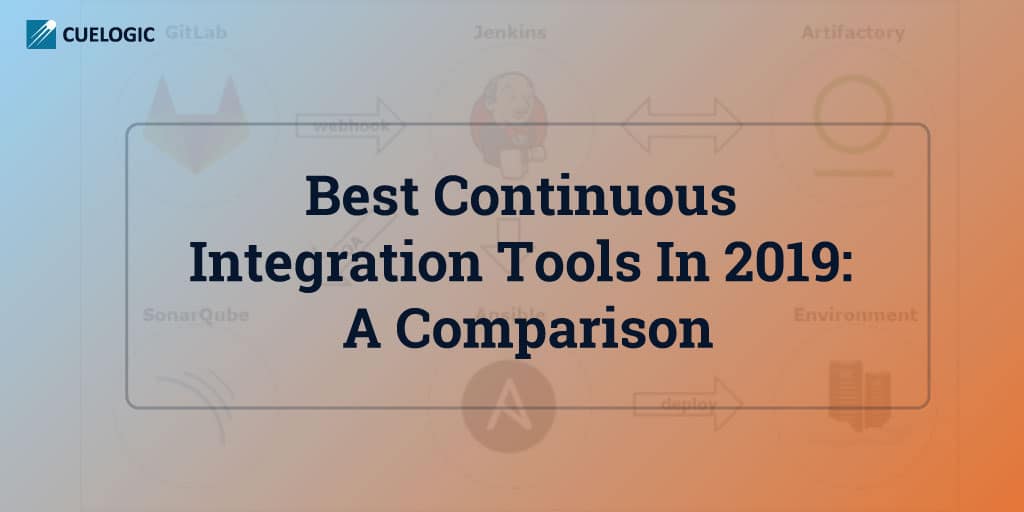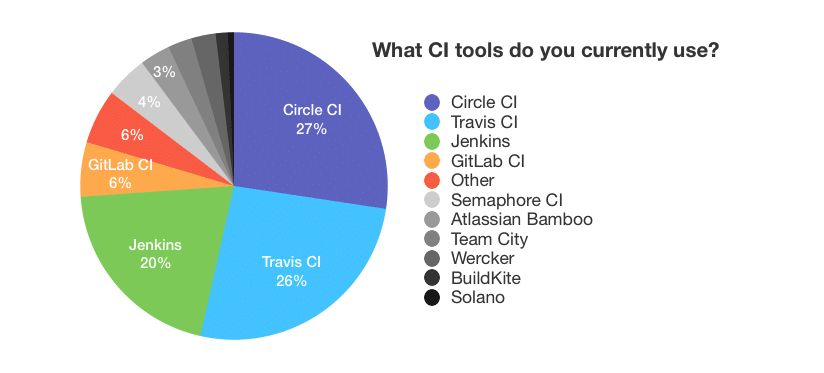The Anatomy of Continuous Integration Tools
Some of the best continuous integration (CI) tools aren’t just for the top players in the industry these days and can be used with much ease. But before getting on with integrating a continuous integration tool with your business, maybe it’s best to compare and see what tools would be suitable for the business.
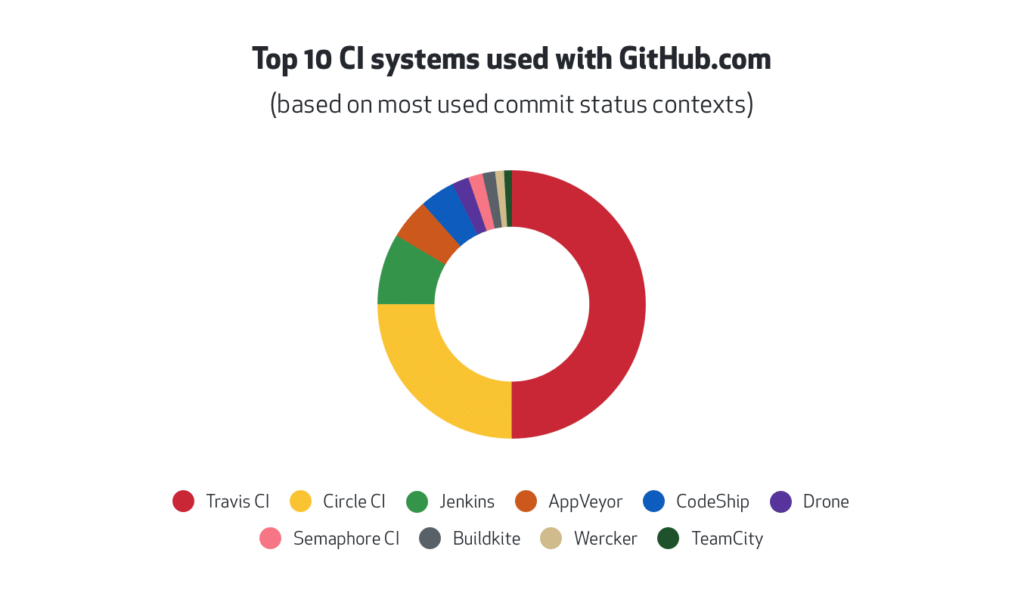
Let’s first review what should be at the mind of any CI team when hunting out for a tool to take their business to new heights.
What Makes A Continuous Integration Tool Good?
-
- Any good continuous integration tool should have some useful rootkits and parallelisation ports to make use of when the coding environment requires a few more helping hands.
-
- A good CI platform should also have compatibilities for the cloud and allow for data to be inputted and outputted on the go with no major bottlenecks, especially at the nodes and gates.
-
- The best CI tools in the business have features that allow users to use the images in the platform in a stage like an environment with drag and drop functionalities. Some even have proper features inbuilt for AR and VR.
-
- When the build finishes, the CI / CD tools should be able to launch the image to see if it works with no runtime errors and backup tasks to be completed on the disk.
-
- What this means essentially is that the virtual machines should have no backup provisions and should be able to deploy about anything.
-
- When concerning updates and other new additions to existing softwares, all good CI tools should be able to build links with .NET core templates and offer good deployment options.
-
- It should all have containers as a first class citizens and especially for teams planning to use Docker.
What To Look For In A Continuous Integration Tool?
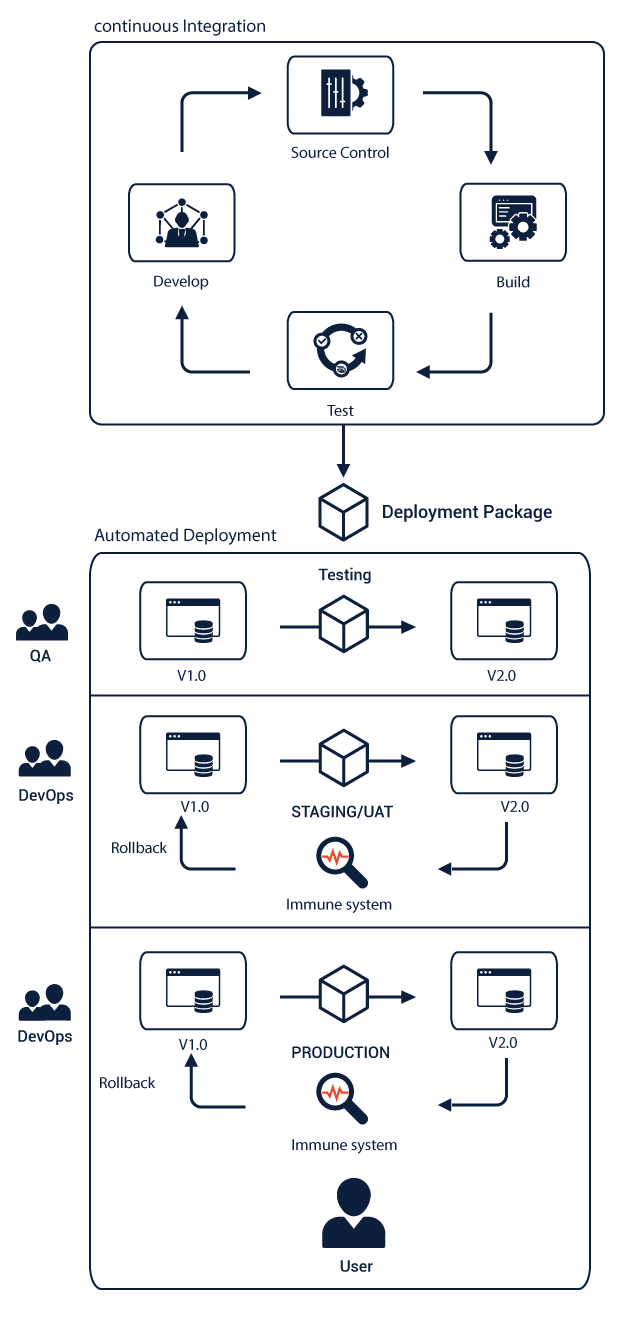 Source:- https://www.red-gate.com[/caption]
Source:- https://www.red-gate.com[/caption]
- All continuous integration tools are supposed to be algorithms that are good at catching errors and speeding up your time to market the product.
- Just like choosing the perfect platform for the company CRM or content management tools, the factors that go into getting the best continuous integration tool too are similar.
- You can either work with a platform that is hosted or one that is available on-premise. Platforms can also be open source, commercial and even integrated. You’ll also want to consider how the team will be able to visualise the entire workflow and share updates.
- Continuous Integration tools can either be served as SaaS or can be hosted alone. Integrations with third-party services can be easier than most cloud-based services but tend to lack security features and sharing capabilities.
- Next moving on to open source. While they may be free, you should always check out the system and confirm that alterations can be done.
- Ensure that the platform or tool has priority access and allows for proper management of the product in the case if a vendor decides to abandon the product.
- Support for integration is another factor. All continuous integration tools tend to rely on issue boards and discussion features that allow for easier collaborations. Consult your team and see what would be best suited to their requirements.
- More and more companies are using built-in continuous integration tools which help developers in reducing the time to string together code.
- A good continuous integration tool also should have capabilities for visualisation that can be accessed by all. Teams members should be able to preview all the lines of code especially when carrying out distributed coding procedures.
- Tools like Deploy Boards can help you watch and view roll out across pods and monitors and even review the status of each environment in a single place. Identifying problems and troubleshooting thus become simpler as teams can share updates and work streams much easier.
Tools For Continuous Integration
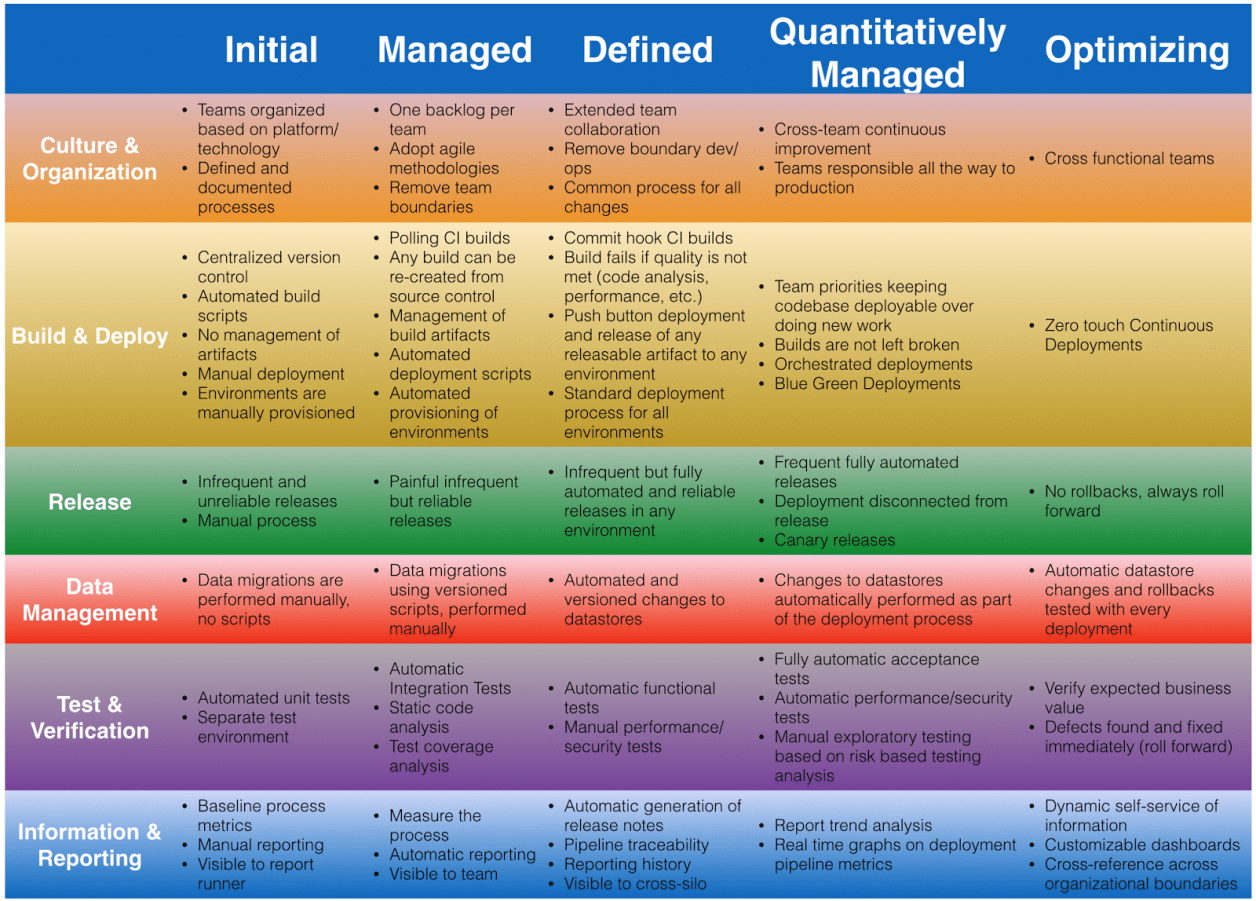 https://www.red-gate.com[/caption]
https://www.red-gate.com[/caption]
Source:-
- Jenkins
- Jenkins is a cross-platform CI tool with configurations for both GUI interface and console commands. So there’s no need to give in to pesky code walls when working.
- Jenkins is an open-source CI tool completely compiled and written in Java that originated as a subsidiary of Oracle created by Sun Microsystems.
- Bamboo
- Bamboo uses a popular pipeline system which can be accessed simply by making a Bitbucket account.
- Bamboo is available for a frenzy of systems and OS applications and helps companies in meeting their continuous integration needs by using Docker pipelines, all of which are tasked through the Bamboo Cloud.
- When coming to the economics of the CI parts, Bamboo is free to try for the first 30 days and offers two separate plans for small and growing teams.
- Being a creation of Atlassian, it has native support for JIRA and BitBucket and teams can even import Jenkins configurations into the Bamboo easily.
- Users will find the CI tool to be great for on-premises setups but a little buggy for cloud setups. Bitbucket Pipelines has well replaced the cloud solution.
- Pipelines have become a modern and fast cloud CI tool integrated into Bitbucket.
- Circle CI
- CircleCI is yet another cloud alternative but may be a deal breaker to some because it only supports GitHub.
- It does, however, support a host of languages including Java, Ruby/Rails, Python, js, PHP, Haskell and Scala.
- CircleCI, however, is much different from other systems in the fact that while softwares for continuous integration are priced on builds, while CircleCI uses containers.
- You can use one container for free from where you can build as many projects on it as you need. You can even add on to other projects to the level of parallelisation that suits your needs.
- There are five distinct levels of parallelisation with containers up to 16 limits. All these support the Docker mainframe with flexible tools that are easy to learn and use.
- A free version exists for the first few iterations while paid versions come with full support.
- BuddyCI
- BuddyCI is a fairly old CI server produced by the JetBrains company that is famous among industry giants for softwares like WebStorm and ReSharper.
- BuddyCI comes with all the features on the free version but only allows for 100 build configurations and three build agents.
- To use more build configurations and agents, you’ll need to purchase a pack. Recently JetBrains came up with a cloud trial of BuddyCI where all the features can be used for one project without the need to install it on-premises that comes with a 60 day trial period.
- Out of the box, BuddyCI works on many different platforms and has the support for a wide variety of tools and frameworks.
- Despite being the Java-based solution, it also has .NET support among the tools as well as some packages that allow for various cross compatibility operations.
- Travis CI
- Travis CI is a web-hosted CI tool that has won the trust of the industry, particularly for its great UI features and tools for sharing documentation.
- It comes with the on-premise version in the form of an enterprise package. Travis CI is free for all open source projects and is hosted on GitHub.
- The first 100 builds are available for no cost, but the additional ones require a subscription package.
- The pricing strategy is all determined by the number of concurrent builds you can run simultaneously.
- Builds are configured using the .travis.yml file that has the build tasks which are executed on the build run that support several modern day computing languages.
- Wercker
- Wercker is a fairly new CI tool in the market that has multiple platform compatibility and can handle complex bottleneck tasks by combining device configurations all together on a single platform.
- Builds and runs can be executed as many times as possible under the beginner package which becomes more and more expensive with greater data uses.
- Wrecker is free to use and can be distributed for new users as long as the company creates a service account on the vendor site.
- GitLab CI
- GitLab CI is a well-known component of the open-source Rails project GitLab and became famous for its cross-compatibility features.
- Hosted entirely on com, its services are well aligned with the git repository management such as access control, issue tracking, code reviews and much more.
- GitLab CI integrates well with the GitLab atmosphere and also can easily conduct projects with the GitLab API. Process building activities are much simpler and can be conducted using the Go language that can be made to run on Windows, Linux, OSX, FreeBSD, and Docker.
- Gitlab CI is also supported on an open source community as well as a paid Enterprise edition.
- Builds and runs are completely free except routing assignments which are commonly used by larger corporations.
Some More Platforms For Continuous Integration
- Solano Labs
- Solano Labs has several tools that streamline build testing systems. Solano offers solutions for SaaS companies and is more centred towards providing a better experience by utilising user data.
- Being compatible with most modern languages, Solano can be linked with data science tools like Scala, SPSS and SAS.
- It has a custom console dedicated entirely to remove bugs.
- The platform also has a load balancer to check how well the builds function across multiple servers.
- It comes with an initial two weeks free trial period which can be changed to a premium package costing $100
- Go CD
- Go is one of the latest Cruise Control creations from the ThoughtWorks company that is free of charge except for the commercial licenses.
- It is available for Windows, Mac and Linux and runs on a system of pipelines that help keep the workflow moving. Pipelines help in connecting all the stakeholders to the same scenario, improving communication on all fronts and allowing for a better understanding of the platform.
- Instead of relying on larger workloads, pipelines break down tasks into smaller portions with teams designated for each section. This eventually brings about a change by removing bottlenecks and induces parallel execution tasks.
- It’s well built to handle complex scenarios and is free of charge with payments for support.
- Nevercode
- Nevercode is a cloud-based CI and CD server well known for its automated approach to getting things done.
- Users can build the initial runs and get to activities like testing and distributing mobile applications without any more intervention.
- Among its many uses include having an automated build process for new code commits. Users can also integrate common app creation tools with the platform for all major OS systems.
- Nevercode supports a high layer protocol cryptographic approach to protect and store passwords along with confidential data.
- Companies can start by creating a free Hobby Plan with subscription packages later on that can take up to $500.
- Codefresh
- If you’re with a team that finds Docker commands to be a bit too complex to figure and understand, then using something a little bit more primitive yet powerful may be the need before moving on to the big stuff.
- Unlike the other tools discussed here that come with support for Docker setups, Codefresh was designed and built with containers in mind.
- Codefresh has been built around the entire system of pipelines.
- You can still use docker files by choosing from several different templates to ease the migration of the project to Docker containers.
- Codefresh is available for around 200 builds per month, with five concurrent builds and one hosted environment that can be used for free. The platform also has options for either hosted or on-premises setups.
- You can even link Kubernetes and Helm Charts to the setups.
Conclusion And Final Result
The softwares and platforms discussed in this list allow for a much intrinsic look at some of the best and most in-demand systems in the industry. As always, leverage the cost to reward ratio when looking out for any continuous integration tool and remember to keep the specifics of the tools in check.
Understand from the very beginning about details such as working platforms, system compatibilities, server load outs, features, subscription prices and work time efficiency. While you may be sceptical about choosing one from the list discussed, keep the reviews close and see which of them match your opinions about the platform that you may be looking for.
[hubspot type=form portal=3432998 id=43c818e9-ba9d-4a5e-a027-8bf8aa4b4481]
